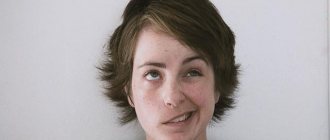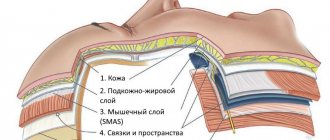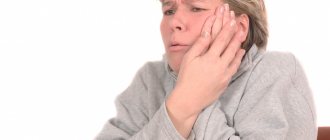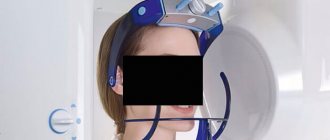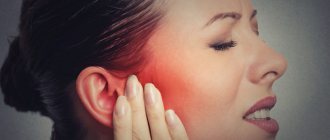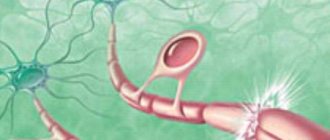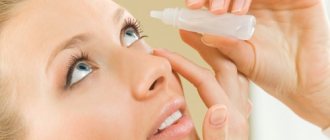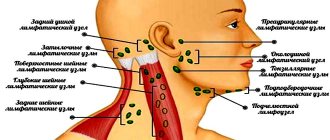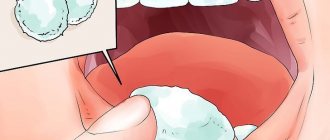A patient with neuritis of the facial nerve can be recognized immediately: squinted eyes, mouth, crooked smile, changes in facial expressions are immediately noticeable. However, the worst thing is that the time for treatment of facial neuritis is quite limited. If damaged nerves are not restored within several months, the chances of recovery are sharply reduced.
After about a year or two, you can only slightly reduce the pathological manifestations, but not completely get rid of them. After 5–10 years, all therapeutic measures will be aimed at at least partially restoring the functioning of the nerve endings. What do you need to know about the symptoms and treatment of inflammation of the facial nerve so as not to miss the deadline?
Concept of facial nerve neuritis
The main cause of a crooked smile is neuritis (inflammation) of the facial nerve. This is paresis, characterized by partial damage to the facial nerve with loss of certain functions. In severe cases, when the pathways of the nerves in the face are completely affected, we can talk about paralysis. Thus, this pathology is partial or complete damage to motor pathways from neurons located in the cerebral cortex to the end of the branches of the facial nerves with disruption of their functioning:
- facial expressions (smiling, raising eyebrows, wrinkling the nose or forehead, baring teeth, etc.);
- speeches;
- smell functions;
- closing eyes or blinking.
Facial nerve
The facial nerve is considered the main nerve of the human face. It comes to the surface in the area of the temporal bone and is divided into several branches:
- temporal;
- zygomatic;
- buccal;
- cervical and mandibular.
It performs mixed functions: provides secretion, movement, sensation (smell, taste). The facial nerve has a certain symmetry: thanks to it, both eyes close and open at the same time, both corners of the mouth are at the same height, when smiling they stretch symmetrically, when trying to raise the eyebrows they rise at the same height, and symmetrical folds form on the forehead.
Physiognomy: what the mouth, lips and smile tell us about
The mouth, lips and smile indicate the level of restraint of a person, and together they also serve as an indicator of sincerity. For example, physiognomists associate lips with a person’s emotionality. And the fuller the lips, the more sensual and emotional the person is. Women accentuate their lips to create an accent for the opposite sex. We will look at the size and shape of the lips.
Full lips, with both lips plump and wide. They indicate emotionality, expressiveness and a developed sense of humor. Angelina Jolie has exactly these lips.
At the same time, convex full lips indicate success in life.
Thick lips speak of extravagance, squandering, and touchiness. Such people love to drink and sit in good company.
Large lips with a drooping thick lower lip speak of a person’s greed, capriciousness and frivolity.
If the lower lip is full, this is a sign of practicality; such a person knows how to persuade. If the upper lip is very thin, the person is used to working at the expense of his personal life. This is often a sign of selfishness.
If the upper lip is fuller than the lower, then this indicates straightforwardness, a desire to always get to the bottom of the truth, and sometimes curiosity.
If the upper lip protrudes slightly, this is a sign of intelligence, caution, straightforwardness of character, but often also vanity.
A strongly protruding upper lip indicates indecision.
Thin lips speak of intelligence, restraint, coldness and prudence. Such a person does not trust flattery, does not demonstrate his feelings to others, is practical, cautious, and sometimes withdrawn.
Very thin lips can indicate cruelty.
A “pressed” mouth with thin lips indicates a tendency towards hypocrisy and envy.
A “sinking” mouth is a sign of prudence.
A mouth with long, pointed, thin lips indicates cowardice.
Small lips speak of intelligence, prudence and foresight.
If the upper lip is shaped like a cupid's bow, this indicates the owner's determination. Such a person will always achieve his goal.
If one corner of the mouth is always higher than the other, this is a sign of a deceiver.
A hard mouth with corners tending downwards speaks of a strong-willed, stubborn person.
If your mouth constantly twitches, then this is a sign of nervousness and excitement.
A mouth slanted to one side indicates a nervous person prone to sarcasm.
Moreover, if the mouth is slanted to one side towards the bottom, this is a sign of inconstancy and stubbornness.
A smile can tell us very interesting information.
Natural smile: wide, lips relaxed, teeth exposed, but you can’t see the gums. This person does not flaunt his feelings, but does not hide them either. He is happy with the situation, everything is in order, everything is harmonious.
A smile with bare gums speaks of a person’s generosity, sometimes of excessive trust in the interlocutor.
When smiling, the upper lip stretches over the teeth. This is read as false sincerity, the person is hiding something. This is how shop assistants often smile, a learned smile.
If a person does not show his teeth when smiling, they are closed. This is the desire to maintain distance and not open up. This is just a courtesy. The person is not yet ready to make close contact.
A crooked smile—one corner of the mouth is higher than the other. This is a smile for show, a desire to make a good impression, but such a person does not show true feelings at the moment.
As we can see, the mouth, lips and smile can say a lot. Be careful when communicating, read facial features and indicators, and we wish you successful practice in this!
08/29/2016Vadim Sokolov
Related Posts
- How to recognize lies by rhetorical signs10/13/2016
- Physiognomy: reading a person by the shape of his eyes09/16/2016
- Gestures and postures in negotiations09/08/2016
Popular Posts
- Transactional analysis in negotiations12/11/2016
- Brainstorming using the Walt Disney method to prepare for negotiations02/27/2017
- Negotiation Approach #1: Negotiation is about getting people to do what we want 06/30/2016
Paresis or paralysis
When any part of the facial nerve is damaged, paresis or paralysis of a specific branch occurs - motor activity in this area is disrupted, and the patient cannot smile. His mouth begins to twist and his teeth on one side are not exposed when he smiles; one eye may not open. There may also be some disturbances in the functioning of the taste buds on the affected side. And salivation on this side, on the contrary, intensifies. This is how a crooked smile appears.
When the facial nerve is damaged, it usually becomes inflamed - when you palpate the affected cheek with your index finger and thumb, you will clearly feel the compaction of the branches of the nerves (you should palpate very carefully, as this causes pain to the person).
A smile will make everyone brighter, even if it is asymmetrical!
Tweet
Good afternoon
Today will be an unusual topic for many. Asymmetrical smile and what is attributed to it...
A sign of neuroticism, falsehood, crooked teeth or jaw, excessive sarcasm - this is what is most often attributed to people whose smile is asymmetrical. Is it so?
In fact, there is never complete symmetry in nature, and, as a rule, a person has one leg longer, one eye slightly larger, and a smile slightly shifted to one side. However, this “slightly” in most cases is not noticeable and becomes noticeable only upon closer examination.
Crooked teeth or jaws cause oral asymmetry, as do some muscle or nerve diseases, but these are physical nuances, and in this material we will focus on the psychological properties of an asymmetrical smile. Why do some people “squint” in one direction or another when they smile?
Many experts in the field of gesture and movement psychology, including the famous Paul Ekman, say that a fake smile is often asymmetrical. An ironic or sarcastic smile is often asymmetrical. This is all true, but not every person who smiles “unevenly” is lying to you. If people, whose even the most sincere and friendly smile is “shifted” only to one side (which, by the way, psychologists talk about, don’t judge by just one gesture, consider the behavior as a whole).
Some psychologists explain the asymmetry of a smile by the fact that one hemisphere reacts more emotionally and more vividly to what is happening than the other. Therefore, of those who “mow”, many “mow” to the left - the right hemisphere is generally more emotional (remember that the right hemisphere is responsible for the left side of the body, and vice versa, therefore in right-handed people the left hemisphere is more active). However, here is the time to remember the mentioned neuroticism - the fact that the hemispheres work so differently can cause other psychological disruptions that can lead to neuroses, and those to somatic or psychosomatic diseases. However, if you have an asymmetrical smile, you shouldn’t become a hypochondriac - this is just a general theory. After all, many children are born with asymmetry, or we are forced to wear plates for a long time.
Another reason is your subconscious reluctance to open up completely; you are always on guard, looking at the world through a visor. By the way, this same trait is associated with “accusations” that those with an asymmetrical smile are too ironic and even sarcastic. This is one of the methods of psychological defense - “translating” the arrows, banter, sometimes malicious.
But it is not all that bad. Owners of an asymmetrical smile are credited with more logical and rational thinking or, conversely, the ability to invent, imaginative thinking (depending on which hemisphere is more developed).
Be that as it may, an unnatural asymmetrical smile looks crooked and forced, but a natural one, even if it is asymmetrical, is beautiful and attracts people just as much as an “even” one. There is an opinion that, if you practice, you can, in principle, even out such a smile, although there is also a theory that asymmetry gives charm to its owners and owners.
Everything is relative, it is important to carry Love within yourself and look at the world through the prism of new times. Smile, there is always a reason to smile, because a smile charges us and guides us at the right moment in time!
Did you like the article? Click like below or go to the main page of the website “Live with Pleasure!”
Distortion on the face
The most characteristic external manifestation of this condition is a drooping and motionless corner of the mouth, a skewed eye, and a cheek. Moderate or profuse drooling and lacrimation on the affected side may also be observed. Moreover, the patient does not feel these nerves - he seems to forget how to wrinkle his nose, smile or raise an eyebrow. The muscle fibers on one side are immobile due to impaired nerve patency. Deterioration or complete loss of taste may also occur.
Causes of pathology
Scientists have still not been able to establish a definitive cause of this disease. A number of factors have been associated with facial nerve inflammation:
- Hypothermia, which leads to a decrease in the body's immune defense. In the case of neuritis, local hypothermia is especially dangerous. For example, a person was in a draft for a long time. In this case, spasm of blood vessels and muscles occurs, which causes disruption of nerve nutrition and the development of a crooked smile.
- A herpes virus that lives in the body of most people and does not manifest itself in any way. However, in case of decreased immunity, it actively multiplies in its favorite place - in the structures of nerve fibers. The virus causes nerve swelling and inflammation. It is believed that this pathology can also be provoked by polio viruses, mumps, enterovirus and adenoviruses.
- Taking large amounts of alcohol. Ethyl alcohol is a strong poison for the nervous system. It can affect not only the brain, but also cause inflammation of the facial nerves.
- High blood pressure. Hypertension can lead to increased intracranial pressure. In this case, the nuclei of the facial nerve are damaged. In addition, high blood pressure often causes stroke. And if the hemorrhage occurs near the facial nerve, then it also suffers.
- Pregnancy. The first trimester is especially dangerous. During this period, hormonal changes occur in the female body, which affect the nervous system.
- Brain tumor. This is a rare cause of neuritis, however, it should not be excluded. The tumor grows, pinches the nerve and disrupts the passage of nerve impulses.
- Traumatic brain or ear injuries. The blow causes damage or rupture of the nerve fiber. Fluid begins to accumulate in this area, swelling and inflammation occurs, which subsequently spreads to the entire nerve.
- Unsuccessful dental procedures, carious infection.
- Severe stress.
- Previous sinusitis and otitis. Pathologies of the ENT organs, bacterial or viral in nature, can spread to neighboring tissues or cause inflammation of the nerve in the area of the temporal bone.
- Diabetes. With this disease, metabolic disorders develop, which provokes the development of foci of inflammation.
- Atherosclerosis. The capillary vessels that supply the nerve with blood become clogged with plaque. As a result, the nerve begins to starve and its cells die.
- Multiple sclerosis. This disease is associated with the destruction of the myelin sheath of nerves and the formation of plaques. Such processes cause inflammation of the facial and optic nerves.
Why is the smile crooked? What is Bell's palsy?
Among the 14 pairs of cranial nerves that provide innervation and motor activity of various muscles of the head, neck and chest, 7 pairs are distinguished - the facial nerve, which branches into two symmetrical parts, left and right, respectively. The main function of the facial nerve is to innervate the facial muscles, lacrimal gland and part of the tongue. Due to an infectious lesion, pathological autoimmune processes or injury, the facial nerve temporarily loses its functionality, and a symptom complex called Bell's palsy occurs. The severity of symptoms depends on the level of compression of the facial nerve in the convoluted canal of the temporal bone, most often the cause is swelling. Nowadays, the main etiological factors for impaired conduction of nerve impulses in the facial nerve are considered to be: hypothermia, infectious diseases of nearby organs (otitis media - inflammation of the middle ear, mumps - inflammation of the salivary gland, meningitis - inflammation of the meninges, etc.), herpes virus, swelling due to a bruise or other type of injury, systemic diseases - diabetes and multiple sclerosis, immunodeficiency, severe intoxication, malignant tumors. In neurology, the causes of Bell's palsy have not been studied in detail, and there is no consensus regarding the age group at risk for this disease. Most experts insist that Bell's palsy is more common among people over 60 years of age, but there is no scientific basis for this fact. The main symptom of nerve damage is paresis and paralysis, in this case it is unilateral, rarely both parts of the face are affected. The asymmetry becomes quite pronounced: the edge of the eye droops, it becomes difficult or impossible for the patient to blink, the corner of the mouth droops (a symptom characteristic of the disease appears - a crooked smile), facial wrinkles gradually smooth out. Pathological changes in the sense organs appear: hearing impairment - an increase or decrease in auditory sensitivity, partial loss of taste or its distortion. Salivation and lacrimation may occur on the affected side of the face. There is a “sail sign” specific to Bell's palsy, which is the inability for the patient to puff out his cheek. The patient himself feels some numbness or heaviness on the affected side of the face. There may be pain in the area behind the ear. Another characteristic feature of the disease is an increase in the intensity of contraction of facial muscles on the healthy half of the face. This is nothing more than an attempt by the body to compensate in this way for the lost functions of the facial nerve. The development of pathological changes in Bell's palsy is rapid. The average speed of manifestation of the main symptoms varies within two to three days. There is a possibility that the symptoms of this pathology will disappear without specific therapy, however, the risk of relapse is also high. Complications characteristic of Bell's palsy are associated with the level of restoration of the conductive function of the facial nerve. A complete loss of contractility of the facial muscles is likely. Another complication of the disease is involuntary contraction of some facial muscles, even after remission. A consequence of impaired eye blinking may be a disruption in the process of complete hydration of the cornea, which can cause infection. Specific therapy for Bell's palsy is aimed primarily at diagnosing the root cause of the disease. To eliminate inflammation and swelling, which causes nerve compression, anti-inflammatory, vasodilator and antispasmodics are prescribed. For severe pain, analgesics are prescribed. In any course of the disease, it is necessary to coordinate treatment with a neurologist, and do not expect that the symptoms will disappear without a trace on their own; in addition, Bell's palsy may be a symptom of another organic pathology that requires urgent diagnosis and treatment.
Diagnostics
Establishing a diagnosis is quite simple - the patient has it “written all over his face.” The main external sign is an asymmetrical smile. However, for adequate therapy it is important to determine the location and extent of the lesion. Based on external signs, one can only guess which branches are affected, but this is not enough for a complete clinical picture.
For diagnosis, electroneuromyography is used, which allows one to evaluate the conductivity of nerve endings, track the signal path and find the affected area.
An MRI may also be ordered. The photographs show the affected nerves and surrounding tissues.
Treatment
People often ask: “What pills should I take if I have a crooked smile?” Let's figure it out.
Facial neuritis should be treated no later than 3 to 7 days from the onset of the first symptoms. This is because the disease progresses rapidly as nerve cells begin to die.
It is important to find out in advance how to correct a crooked smile.
For neuritis of the facial nerve, medications containing B vitamins are prescribed. This is a neurotropic combination that improves metabolic processes, trophism of nerve pathways, and impulse transmission. Lipoic acid (thioctacid) and the medicine Keltican are also prescribed.
To restore movement functions, the patient is prescribed a massage of the face and collar area, physical therapy, which is aimed at restoring blood supply to the affected nerves.
Algorithm of actions
— If in front of us is a person who has weakness in the limbs, we see that his smile is no longer symmetrical and he has begun to speak indistinctly, then we must immediately contact the emergency medical service by calling 03, 103 or 112. The dispatcher should speak clearly age, gender of the patient and name the symptoms. In the first seconds of a conversation, the call center understands what is being discussed and who will respond to the call. The routing of such patients is strictly regulated. There are regional cardiovascular centers where such patients are provided with appropriate therapy. Already at the stage of pre-hospital care, it is possible to begin treatment, for example, placing drips with blood thinning drugs so that the clot dissolves in the vessel and blood flow is restored.
The minimum plan is to recognize a stroke and call an ambulance. While the doctors are traveling, calm the patient if he is conscious, monitor his blood pressure, contact him, put him to bed, open the window, unfasten tight clothes - collar, belt. Wait for the ambulance, collect your passport, insurance policy and personal belongings. Most likely, we will talk about hospitalization.
If the person is unconscious, try to ensure safety, but do not touch him. Call emergency services immediately. Tell the dispatcher that you see signs of a stroke in the person and give the address. Stay with the victim until paramedics arrive. Sometimes people wake up in the morning and see that their relative cannot get up, does not answer questions, or does not understand what is being asked. You need to act in the same way in this situation: urgently call a doctor.
Exercises
What exercises can be performed for inflammation of the facial nerve? How to correct a crooked smile with exercises?
It is necessary to force the nerve fibers to begin functioning again. To practice, you need to use a mirror, in front of which you do gymnastics: raising and lowering your eyebrows, blowing air through pursed lips, pronouncing sounds, syllables and words, trying not to twist your lips to one side.
We looked at the symptoms and treatment of inflammation of the facial nerve. For therapy to be effective, it is necessary to approach the process comprehensively. A variety of physiotherapeutic procedures that are aimed at eliminating the inflammatory process in nerve fibers and restoring their conductivity have a good effect.
